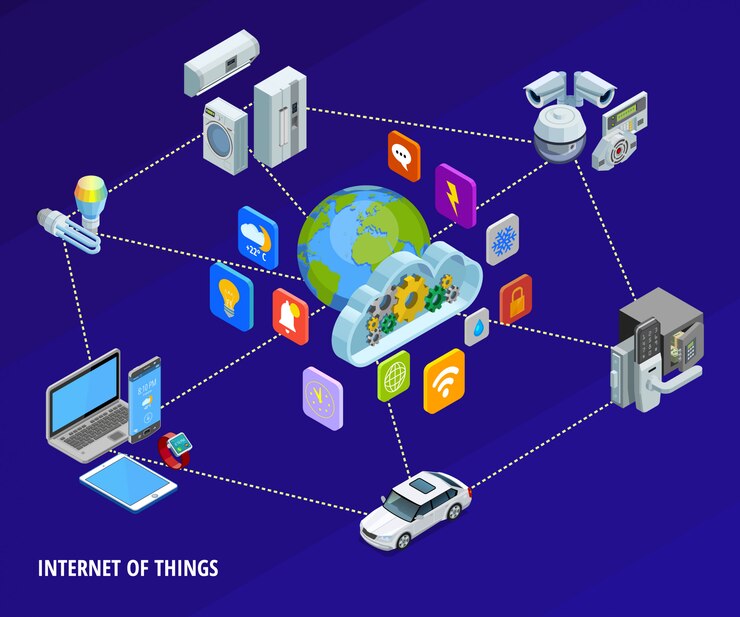Single Network Vs. Multi-Network SIM Cards: Which Is Right For Your IoT Project
-
March 13, 2024
-
8 min read

Research by GSMA Intelligence reports an increasing number of Internet of Things (IoT) devices are being connected to the web every year. This is from around about 13 billion in 2020 to about 24 billion by 2025. SIM cards are the underlying reason behind this fast pace of growth, helping connect the spate of devices tracking their target instrument’s condition, location and other vital parameters. In this piece, we break down the difference between single-network and multi-network SIM cards to help you decide the exact type to use and meet your business objectives through them.
Why use IoT SIM Cards
A Subscriber Identification Module (SIM) card is a flat plastic card with a minute electric part on its surface, that delivers a telecom network connection on mobile devices. A variant of a typical SIM card is an IoT SIM card, purpose-built to be embedded into your IoT devices.
The IoT SIM cards come with unique capabilities including lower power consumption to operate without draining the device’s power and helping it operate in tough environments. In fact, low-power wide-area (LPWA) IoT technologies are predicted to comprise 50 percent of all available cellular IoT connections by 2027, according to a recent report by Ericsson.
Additionally, they come with better security capabilities and compatibility with different network technologies. The billing is usually based on the data plan you require to get the most from your devices.
IoT SIM cards are offered in different types, the most popular being single-network vs multi-network. Other SIM card versions are tailor-made for specific industries, including automotive or manufacturing, with better endurance for severe environmental conditions or increased sensor sensitivity.
What are single-network SIM Cards?
Single network cards, simply put, operate by connecting with the network operator issuing the cards, with no provision to connect to external operators. Usually, a dual SIM configuration works for better connectivity, activating the second SIM when the first goes down.
But if you need your Wide Area Network (WAN) to reach a large area, perhaps including multiple states, you might want to check with your telecom operator to offer an optimal solution. This will ensure connectivity in some dark zones where the network from either of the SIM cards doesn’t work.
What are multi-network SIM Cards?
A multi-network SIM card became mainstream with the advent of IoT and the need to ensure round-the-clock connectivity that is stable as well. As the name conveys, the card interoperably works with any network part of the operators’ scope of networks that offers the highest connectivity rates at any point in time.
These SIMs are broken further into key types – steered and unsteered. Steered SIMs will automatically connect with the primary carrier always, and only switch to other operators when the network goes down.
In contrast, unsteered multi-network SIMS constantly keep switching to the network offering the highest connectivity at any point in time. While managing an unsteered network can be expensive, it delivers better results.
Pros and cons of single-network SIM cards vs multi-network SIM cards:
Borderless network reach
Multi-network SIM cards can be placed on any device, anywhere and anytime, given they require less energy to operate. Also, they do not require additional energy when they enter a certain geography. In fact, they demonstrate their resilience in being operational even during periods when the network faces connectivity issues.
However, this is not a blanket statement to say that every multi-network IoT SIM card will connect everywhere around the world. Be sure to check and confirm the scale and the reach of the network your operator has, usually with around 700+ operators available across the world today.
But in the single-network SIM cards vs multi-network SIM card comparison, single-network SIMs operate within the limits of the presence their network has established. They certainly also work with any partner or subsidiary networks that have agreed to work and allow network utilization.
The bottom line is to find any billing or added charges you would encounter if your network switches to another non-partnered network.
Reliability
Single-network SIMs solely rely on the uptime and network availability of their source operator, hampering their ability to deliver an always-on network service for seamless, always-on data transfer requirements. But the difference between single-network and multi-network SIM cards is the latter comes to a customer’s need for evergreen and consistent uptime demands.
They allow easy switching to a provider with available or higher bandwidth, despite the native operator’s service being down. This feature is available for both steered and unsteered SIM types, with the former heavily utilizing the native operator’s network as long as it is available, and switching back to it when the network becomes available again.
SIM and connectivity management
With a range of IoT devices running across multiple geographies and operators, having a dashboard or portal where you can monitor the performance of your connectivity with the IoT-enabled devices becomes crucial to managing your IoT projects.
Whether you use single-network SIM cards vs. multi-network SIM cards, the operator must provide customisable dashboards to meet your business needs. They should help you control key technical and management aspects, like manually changing operators or finding resolutions to an area that operators are now unable to connect well with.
You can also filter available networks to a smaller cohort at a central level for administrators to only allow switching to the target networks. This maximizes functionality and ultimately, performance.
Secured networking
With the threat of unsolicited attempts to hack and control internet-enabled systems like your IoT projects, choose operators that allow encryption protocols, including OpenVPN or IPSec. Such protocols that are put in place must also allow the secure remote control of specific IoT devices to reconfigure or modify the way they operate.
Other essential features include periodic scanning and preventive measures to minimize the entry of suspicious web traffic or malware software. When you think about single-network SIM cards vs multi-network SIM cards, securing the latter becomes important, given its vulnerability from attacks from the nefarious scope of networks it can be connected with.
Demand for internet services
For IoT-powered devices requiring internet connectivity and not just network-layered data connectivity, the operator must deliver uninterrupted, low-latency broadband through partnerships with regional operators closer to the device or cohort of devices. This is vital, owing to the nature of how the devices run and generate data.
Here is where the difference between single-network and multi-network SIM cards comes to the fore. The scope of the former offering this is quite slim, while operators managing multi-network IoT SIM cards can easily deliver internet services as a layer with the cards. It prevents significant effort and cost in setting up a dedicated internet service that works with IoT-enabled devices. Rather, it offers a bundled service through the multi-network SIM card.
IP Address for identification
Fixed and dynamic IP addresses are unique identifiers for other digital entities to connect to the right destination device. Both single- and multi-network SIM cards must be flexible to work with these IP address types.
That is because while individual users use the dynamic versions as they would not need to be aware of their IP address, businesses using their dedicated network can use a static or fixed IP address.
How to choose the best SIM cards for your IoT Project
Here are key parameters to keep in mind:
- Coverage area: Unless you operate in a smaller geography or area, coverage area must be on top of your list to ensure your IoT SIM card operator covers the breadth of your device installations and presence.
- Reliability: A critical metric you should review with the operators you shortlist is uptime. If you opt for multi-network SIM cards, the operator must deliver increased reliability scores.
- Data Transfer speeds: With IoT devices generating a lot of data, review the operators’ track record of data transfer rates. You can conclude by looking at customer stories on crowdsourced platforms.
- Pricing: Choose someone offering flexible pricing based on the nature of your IoT project requirements and implementations, helping you save capital where possible.
- Security: Data transfer protocols, endpoint encryption and other measures are mandatory to get your IoT connectivity efforts underway to make your IoT projects successful.
Based on the experience we have in the market by helping our customers manage their IoT projects, multi-network SIM cards are the way to go, offering better scope in all of the parameters discussed in this article, helping you drive better and faster results from your IoT devices, and preventing lags or avoidable maintenance downtime phases. Look up Airtel’s IoT solutions page to know everything you need to get started.
 Share
Share








